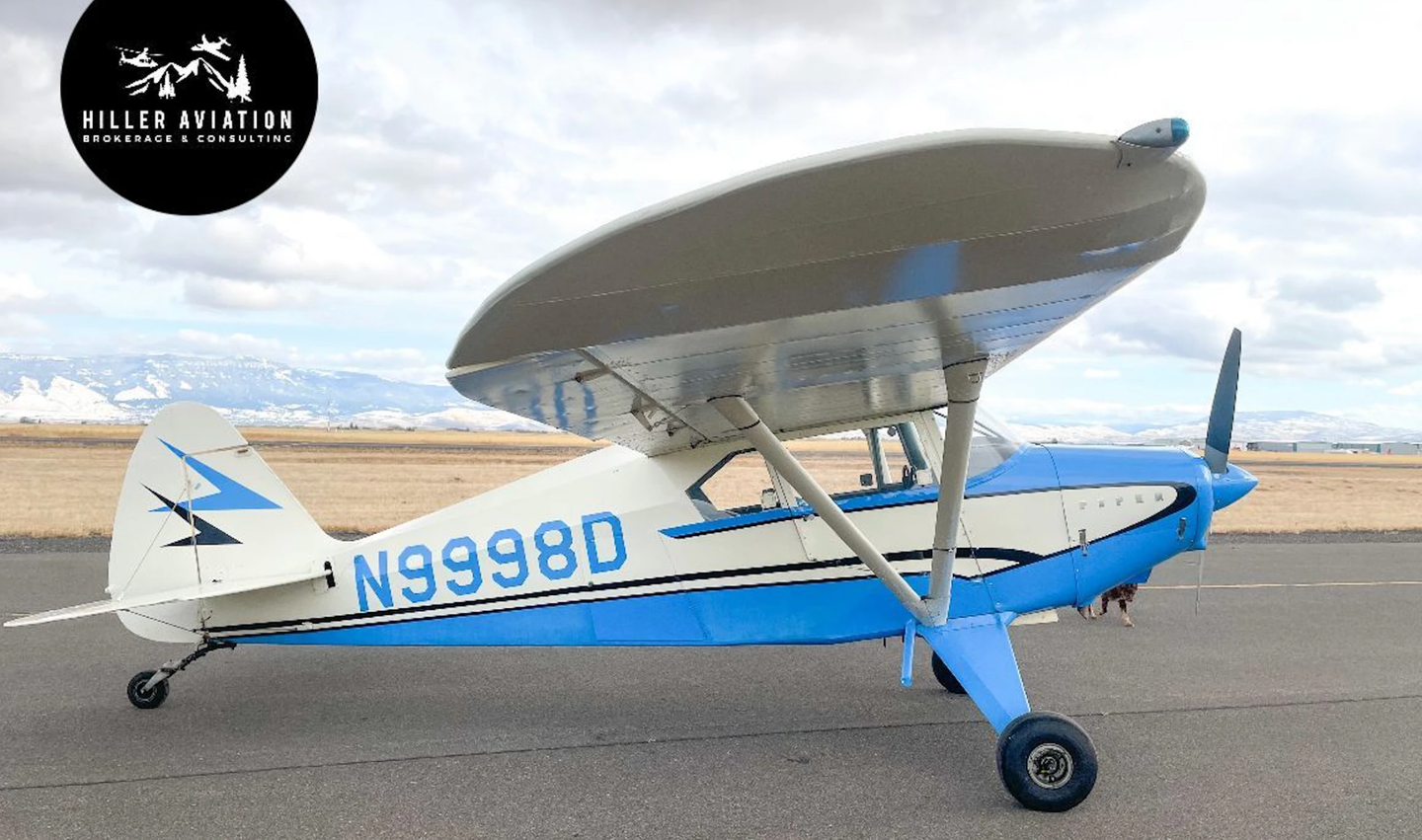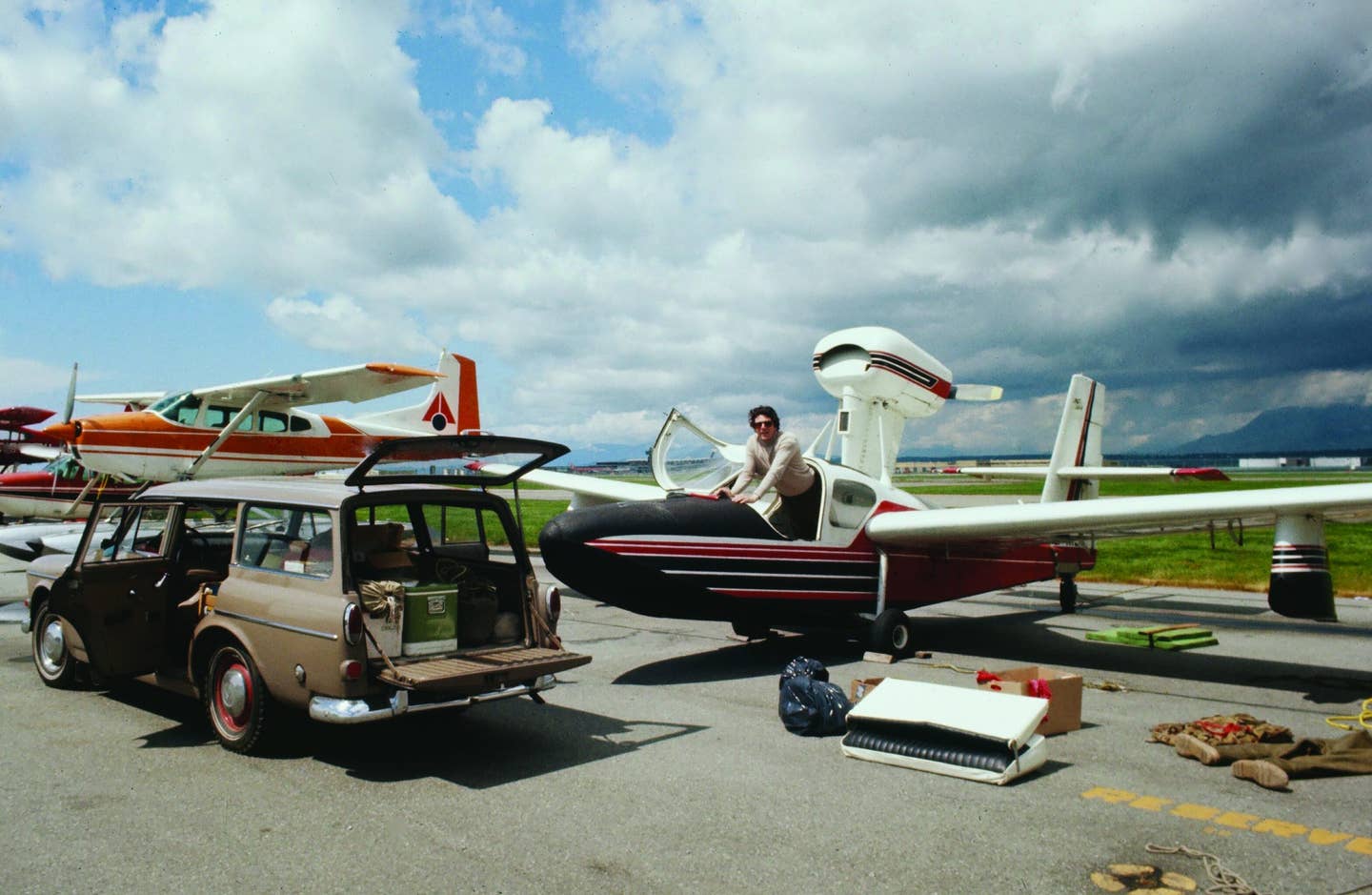Piper Archer: 50 Years & Counting
The Piper Archer soldiers on into a new generation
 |
Learning to fly is, in many respects, simpler than it's ever been. True, airspace is more congested, especially around the 80 or so major airline hubs, and aspiring pilots probably have more to learn, but today's trainers are about as sophisticated and easy to fly as possible. These days, it seems that Garmin glass avionics extend practically to the bottom rungs of most manufacturers' model lines. Admittedly, that talented glass-cockpit system is a complex device, but once a student gets in step with the big Garmin, flying the airplane becomes almost second nature.
The ranks of general aviation teaching machines have been dominated by Cessnas. Piper has always had a significant presence in the training class, but Cherokees and their successors have had an uphill battle in catching the older 150/152 and, more recently, the Skyhawk. Still, various versions of the PA-28-180/181 are popular as training aircraft. My Pilot Peggy started working on her private license in an Archer a while back, and absolutely loved the airplane. She switched to a late-model Skyhawk when the Archer's owner took his airplane off leaseback.
Similarly, I know other folks who won't accept anything less than an Archer. A few years ago, a good friend with an American oil company stationed overseas in Manila, Philippines, called and requested that I find him a nice Archer in which to teach his daughter to fly, and for use during his frequent trips back to the home office in Los Angeles. Barry wanted just the right airplane, was adamant about it being an Archer, wasn't in any big hurry, and encouraged me to be very picky. Over the next 18 months, I looked at a half-dozen airplanes, and was amazed at how few were on the market. Apparently, pilots who find good Archers hang on to them.
Now comes the Archer LX, an airplane Piper hopes will help improve its grip on the entry-level trainer/traveler market. The very nature of flight training is changing, and Piper hopes to help change it. A decade into the new millennium, Cessna, Diamond and now Piper, are placing more emphasis on learning to fly in a four-seat, midrange airplane rather than a dedicated two-seat trainer; then, transitioning to higher ratings, transporting family on vacations and weekend getaways, or flying business trips in the airplane.
 |
The Piper Archer LX fits perfectly into such a multimission profile. Now that the 160 hp Skyhawk has been shelved, leaving that market exclusively to Piper's Warrior, the Archer LX is a head-to-head competitor with the Skyhawk S, a 180 hp variant of the basic 172 (though the S is fuel injected rather than carbureted). Except for the wing configuration, the Archer and Skyhawk are remarkably similar airplanes in many respects. They share the same horsepower, fixed-pitch props, four seats, fixed gear and cabins of comparable size. Both airplanes emphasize simple systems, gentle handling and landing characteristics that redefine the term "benign."
For many pilots, the Skyhawk/Archer debate devolves to an aviator's preference for high wing or low wing, a choice that often harkens to the type of airplane he or she trained in. There's almost no chance that debate will be resolved anytime soon.
High-wing fans argue that there are no low-wing birds, and low-wing advocates question the almost total dearth of high-wing jet fighters. (Okay, the Navy's F8 Crusader wasn't exactly a slouch.) High wingers tout their type's ready adaptability to float and bush operation, and low-wing supporters point to the fact that high-wing airplanes block the view of other traffic and the airport during base and final turns. 'Nuff said. We'll leave that debate for another article.
Here's a look at the performance and specifications for the two 2011 models:
 |
By any measure, the Archer LX is a plush airplane, with equipment and features commensurate with its price tag. Open the right entry door, and you're confronted with more leather than a rock star's closet. Interiors have been progressively improved to the point that they truly are nearly automotive in nature. Air-conditioning, the ultimate creature comfort, is available as an option.
The Archer's panel features a Garmin 500 system with Synthetic Vision as standard. The package provides plenty of extra panel space, should you select options such as Stormscope, SkyWatch, ADF or DME. The radio suite includes a pair of do-everything Garmin GNS 430W VHF/LOC/VOR/GPSs, a Garmin 340 audio panel and a Garmin 330 Mode S tran-sponder with Traffic Information System uplink. An STEC 55X autopilot also is optional. In other words, the Archer is IFR-ready right out of the box. Piper also offers an option for upgrading to a dual G500 system.
 |
That means you could buy an Archer LX, earn your private certificate in it, go on to add an instrument rating, and eventually upgrade to a commercial license. Meanwhile, you could enjoy the mobility and convenience of a comfortable machine that can easily operate in 2+2 mode.
As you can tell from those numbers, the four-place Archer isn't a four-people airplane, at least not four full-sized people, and not with full fuel aboard. No surprise there---in all fairness, few aircraft can fly with seats and tanks topped.
 The new Piper Archer LX has a dual mission of trainer and cross-country platform. Its panel features a Garmin 500 system with synthetic vision technology as standard. An option also is offered for upgrading to a dual G500 system. |
The Piper's payload numbers are fairly comparable to the Skyhawk's, and neither will fly away with full everything, unless at least some of the people are downsized. If you need to carry a real 680 pounds of humans in the Archer, you'll have to leave about 100 pounds of fuel in the truck, roughly 17 gallons. That will allow you to carry 31 gallons of 100LL, enough for two hours plus reserve at max cruise, perhaps 2.5 hours at max economy settings.
If the load is just Mom, Dad and two preteen daughters, you probably could fuel up, toss in a couple of bags and head for far(ther) horizons. Four hours behind the yoke should yield just less than 500 nm at the airplane's typical block speed of 120 knots, and if you have two preteen daughters in the back seat, you WILL be ready to stop.
That's not necessarily the fault of the airplane. The Archer's noise and vibration levels at cruise, major fatigue factors for pilots and passengers, are surprisingly low. Normal conversation easily is audible without headsets, for those folks who prefer not to be encumbered by wires and a head clamp. I've ferried perhaps a dozen Archers across the Atlantic to Europe, Africa and the Middle East, and the airplane wears well on those long transatlantic legs, often 14 hours or more.
Inflight visibility is good from any seat, especially the left front. If you lean slightly forward, you can see practically straight down through the left side window. Similarly, the view to the top quadrant is reasonable, though a left eyebrow window would be a help.
The Archer LX features a low, full-flap stall speed of only 45 knots, but the even better news is that the airplane manifests stall characteristics just this side of a Maule. Read that as the most forgiving above the planet (one reason the Maule makes such an excellent bush plane). The semitapered Warrior wing, adapted to the Archer in 1976, pays off with little more than a gentle hobby-horse bucking. There's no major pitch moment at the break, and little or no tendency to roll. Perhaps ironically, some flight instructors criticized the Archer's stall as too gentle, as if any airplane could be too safe.
 |
Closer to Earth, this translates to predictable manners in the pattern and among the easiest landings of any general aviation airplane I know of. With full flaps deployed, Archers can fly final at 60 knots without violating the 1.3 Vso rule. It's easy to recognize flare height, and pitch sensitivity at low speed is just right to help ease the airplane down to the runway.
Though Skyhawk advocates may disagree, the Archer is an airplane for most, if not all, reasons. It's a perfect example of Piper's philosophy of building airplanes that span most of the market. The Archer LX is one of eight Piper models that include a single-engine turboprop, two twins and four certified piston singles. At this writing, Piper has perhaps the most comprehensive lineup in the industry, though the company doesn't yet offer a jet. (A single-engine jet is currently in flight test.)
Piper's recent acquisition by the Asian Pacific conglomerate Imprimis may not have totally immunized it from a weak sales market, but the company now seems primed to endure for the long term. Piper sales were up 75% last year, a distinction few other manufacturers can claim.
The Vero Beach company's general aviation product line is the most diverse in the industry, and the Piper Archer LX may be the closest anyone has come to that ideal---an everyman's airplane.
Ready, Set, Fly!
|
| Piper is offering new Archer LX customers their own private pilot training in just three weeks at Vero Beach Municipal Airport. The custom program created for Piper Archer LX students will take them from zero time to their private pilot, and each student pilot will get a personal dedicated instructor pilot for the accelerated training. If already a qualified private pilot, an Archer LX customer can apply their Ready, Set, Fly privileges toward another FAA certification. Customers may also elect to conduct the training at another location with the training provider of their choice. |

Subscribe to Our Newsletter
Get the latest Plane & Pilot Magazine stories delivered directly to your inbox






